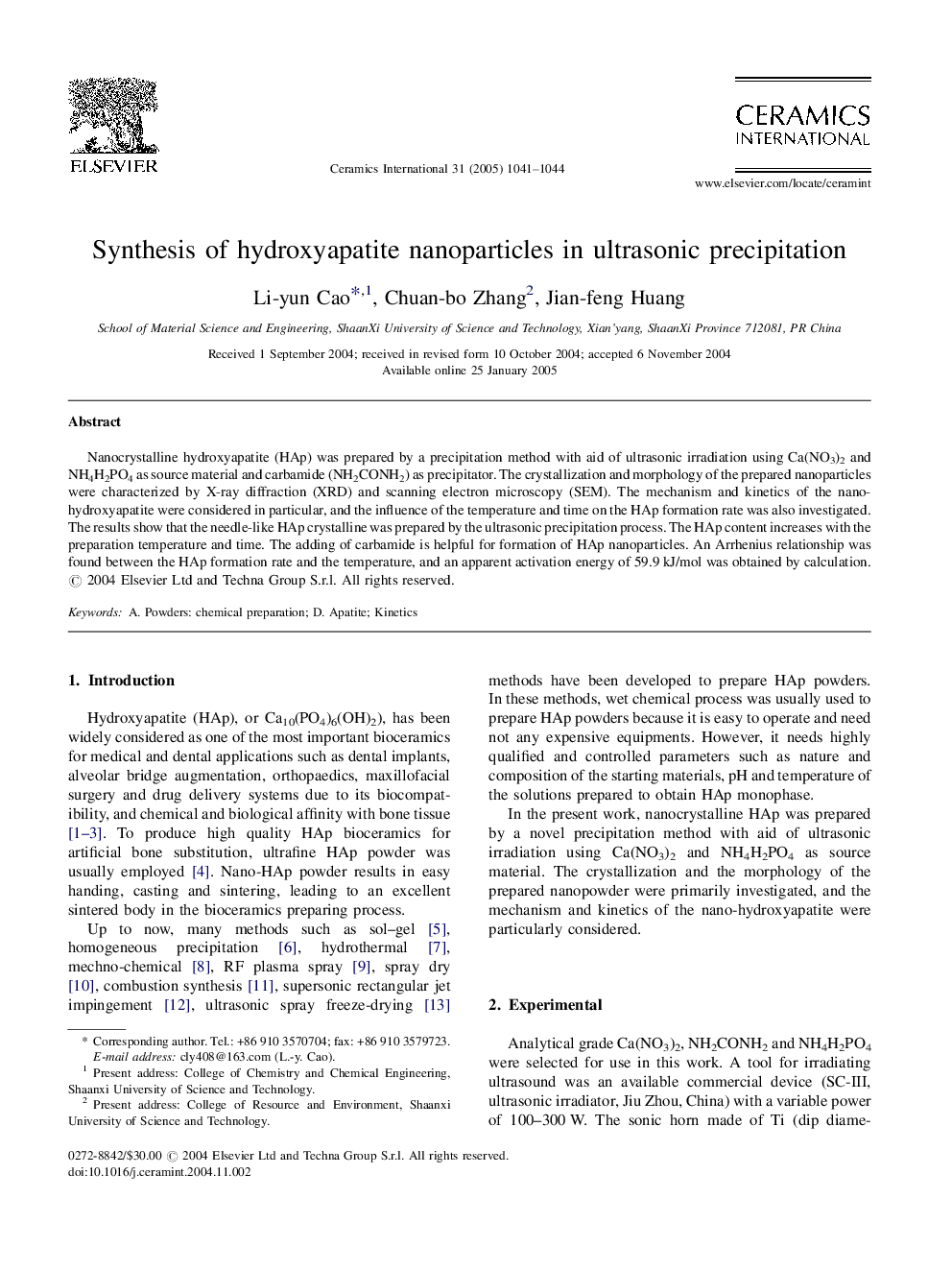| Article ID | Journal | Published Year | Pages | File Type |
|---|---|---|---|---|
| 10626468 | Ceramics International | 2005 | 4 Pages |
Abstract
Nanocrystalline hydroxyapatite (HAp) was prepared by a precipitation method with aid of ultrasonic irradiation using Ca(NO3)2 and NH4H2PO4 as source material and carbamide (NH2CONH2) as precipitator. The crystallization and morphology of the prepared nanoparticles were characterized by X-ray diffraction (XRD) and scanning electron microscopy (SEM). The mechanism and kinetics of the nano-hydroxyapatite were considered in particular, and the influence of the temperature and time on the HAp formation rate was also investigated. The results show that the needle-like HAp crystalline was prepared by the ultrasonic precipitation process. The HAp content increases with the preparation temperature and time. The adding of carbamide is helpful for formation of HAp nanoparticles. An Arrhenius relationship was found between the HAp formation rate and the temperature, and an apparent activation energy of 59.9Â kJ/mol was obtained by calculation.
Related Topics
Physical Sciences and Engineering
Materials Science
Ceramics and Composites
Authors
Li-yun Cao, Chuan-bo Zhang, Jian-feng Huang,
